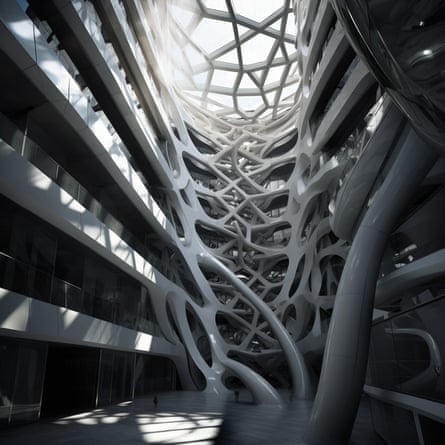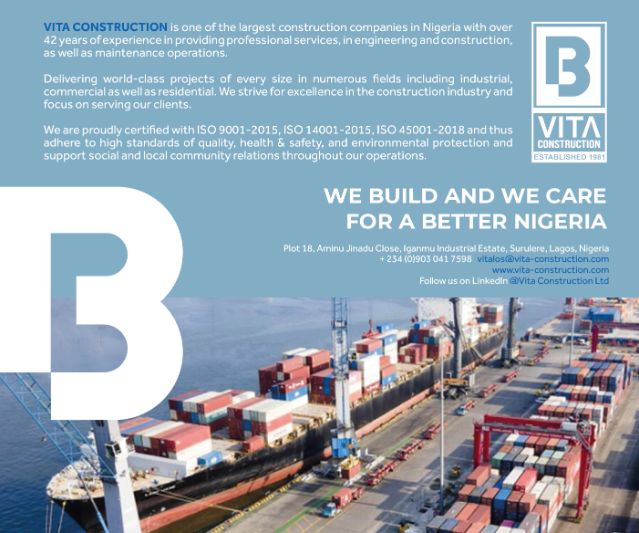A handful of little green blocks flashes up on the screen, filling a building site with a neat grid of uniform cubes.
One second they form rows of towers, next they morph into low-rise courtyards, then they flip back into long slender slabs, before cycling through hundreds of other iterations, in a hypnotic high-speed ballet of bristling buildings.
I watch this while on a Zoom call with Wanyu He, an architect based in Shenzhen, China, and the founder of XKool, an artificial intelligence company determined to revolutionise the architecture industry. She freezes the dancing blocks and zooms in, revealing a layout of hotel rooms that fidget and reorder themselves as the building swells and contracts. Corridors switch sides, furniture dances to and fro. Another click and an invisible world of pipes and wires appears, a matrix of services bending and splicing in mesmerising unison, the location of lighting, plug sockets and switches automatically optimised. One further click and the construction drawings pop up, along with a cost breakdown and components list. The entire plan is ready to be sent to the factory to be built.
I applaud He on what seems to be an impressive theoretical exercise: a 500-room hotel complex designed in minutes with the help of AI. But she looks confused. “Oh,” she says casually, “that’s already been built! It took four and a half months from start to finish.”
The promises – and perils – of AI have been gripping the world of architecture and design in recent months, but few have grasped that the revolution is already under way. Image-making tools such as Dall-E, Midjourney and Stable Diffusion have allowed the effortless creation of seductive visions: skyscrapers in the style of Frank Lloyd Wright, but AI is already being deployed to shape the real world – with far-reaching consequences.
“The problem with architects is that we almost entirely focus on images,” says Neil Leach, author of Architecture in the Age of Artificial Intelligence. “But the most revolutionary change is in the less sexy area: the automation of the entire design package, from developing initial options right through to construction. In terms of strategic thinking and real-time analysis, AI is already way beyond what human architects are capable of. This could be the final nail in the coffin of a struggling profession.”
In Leach’s view, XKool is at the bleeding edge of architectural AI. And it’s growing fast: over 50,000 people are already using it in China, and an English version of its image-to-image AI tool, LookX, has just been launched. Wanyu He founded the company in 2016, with others who used to work for OMA, the architecture practice of Rem Koolhaas (hence the company names). They had become disillusioned with what they saw as an outmoded way of working. “It wasn’t how I imagined the future of architecture,” says He, who worked in OMA’s Rotterdam office before moving to China to oversee construction of the Shenzhen Stock Exchange building. “The design and construction processes were so traditional and lacking in innovation.”
She and her colleagues were inspired to launch their startup after witnessing AlphaGo, the first computer program to defeat a human champion at the Chinese board game Go in 2016. “What if we could introduce this intelligence to our way of working with algorithmic design?” she says. “CAD [computer aided design] dates from the 70s. BIM [building information modelling] is from the 90s. Now that we have the power of cloud computing and big data, it’s time for something new.”
XKool aims to provide an all-in-one platform, using AI to assist with everything from generating masterplan layouts, using given parameters such as daylight requirements, space standards and local planning regulations, right down to generating interiors and construction details. It has also developed a tool to transform a 2D image of a building into a 3D model, and turn a given list of room sizes into floor plans. It’s early days and, so far, the results are clunky: the Shenzhen hotel looks very much like it was designed by robots for an army of robot guests.

The late Zaha Hadid’s firm, ZHA, headed by techno-evangelist Patrik Schumacher, has embraced AI for early “ideation”, using Midjourney to churn out options in its distinctive house style. “You don’t even have to do much,” Schumacher said in a recent online discussion, as images of swooping forms flashed on to the screen, like globs of chewing gum stretched into oblivion. “You show them raw and you can generate ideas with clients. The light, shadow, geometry, coherency, sense of gravity and order is so potent.” It’s no surprise that the firm’s heady visions for a desert spa resort complex in Neom, the controversial “smart city” in Saudi Arabia, were generated by AI – and will probably never see the light of day. These are surface-deep images for a project that is only about image.
Such work raises an interesting question about the future of the Zaha Hadid brand, and others like it. Just as deepfake technology makes it possible for dead actors to be resurrected in new roles, could we see a world where the back catalogues of deceased architects are used to generate cover versions of their work, regurgitating counterfeited classics in a nauseating feedback loop? With generative tools becoming increasingly sophisticated, and working at breakneck speeds, how long before architects should start fearing for their livelihoods?
“I like to think we are augmenting, not replacing, architects,” says Carl Christiansen, a Norwegian software engineer who in 2016 co-founded AI tool Spacemaker, which was acquired by tech giant Autodesk in 2021 for $240m, and then rebranded as Forma. “I call it ‘AI on the shoulder’ to emphasise that you’re still in control.” Forma can rapidly evaluate a large range of factors – from sun and wind to noise and energy needs – and create the perfect site layout. What’s more, its interface is designed to be legible to non-experts. Christiansen sees this as a key benefit, enabling all parties to participate in an open, collaborative conversation. “It’s a shareable, cloud-based tool open to everyone,” he says. “So municipalities and members of the public can be invited to engage with a project, see the trade-offs and even experiment with alternative options themselves. That level of transparency builds trust.








